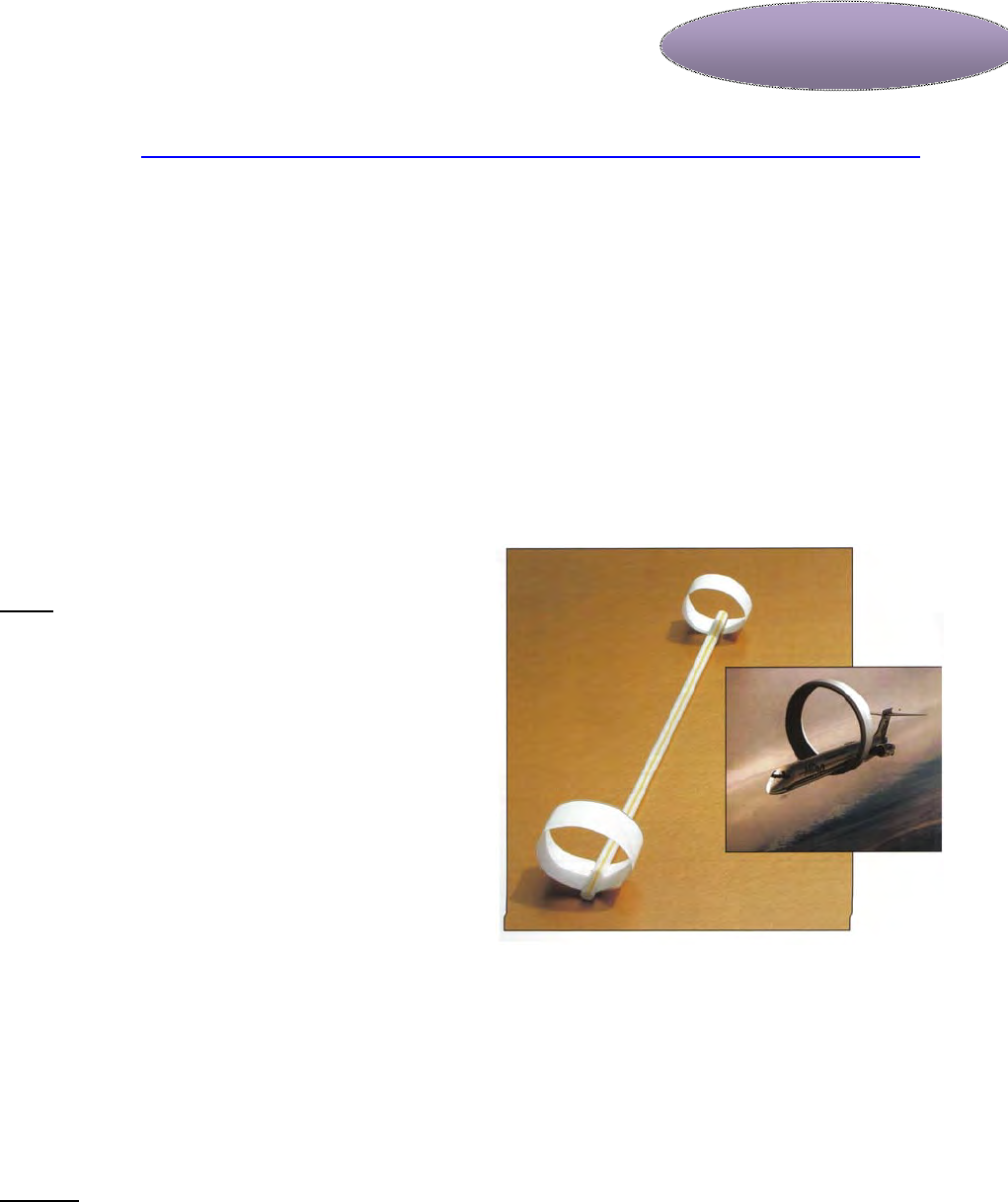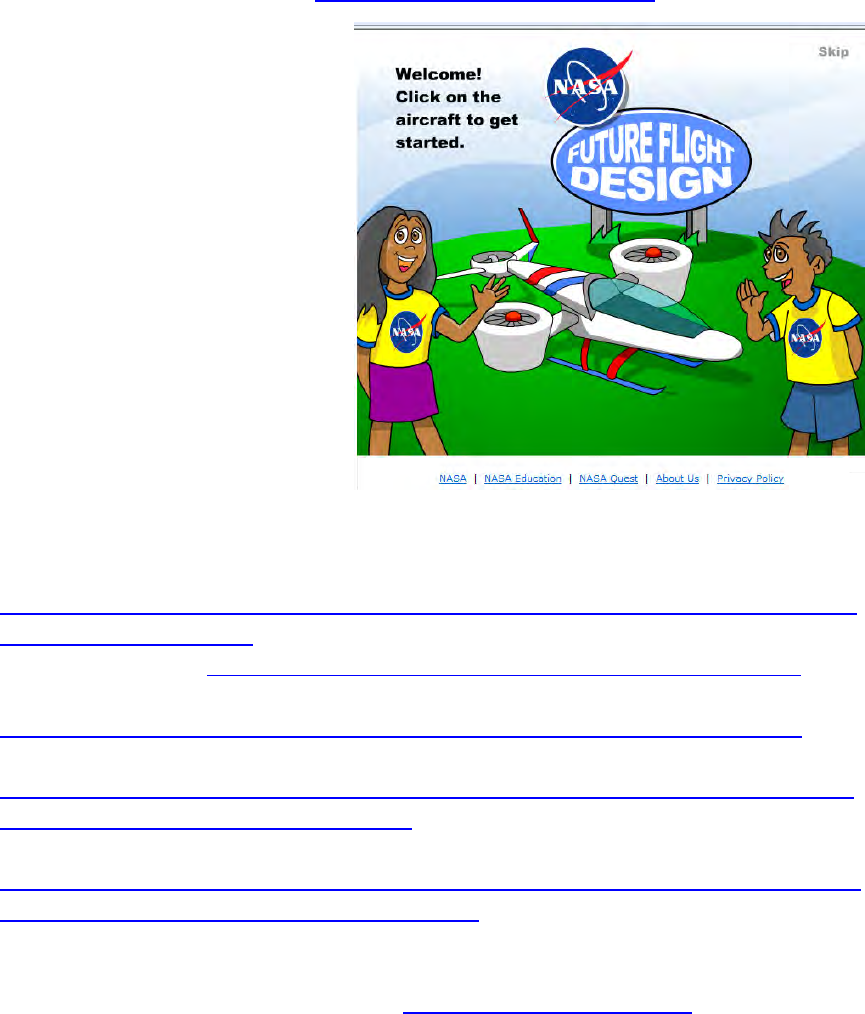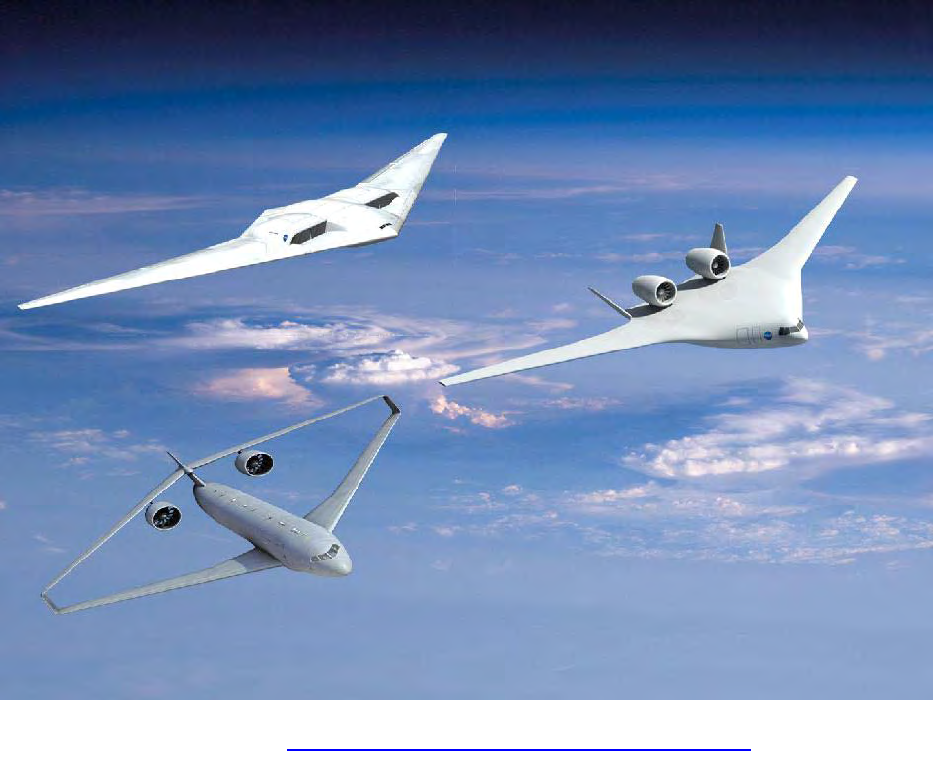
103
Gliding into the Future
Lesson Reference: CAP’s AEX II, vol. 2; NASA lesson, Getting the Drop on Flight with the
“X” Planes, at
http://www.nasa.gov/pdf/546442main_E1_GettingTheDropOnXPlanes_C4.pdf
Objectives:
• Students will compare past flying machines to flying machines of today and the
future, identifying similarities and differences using a Venn diagram.
• Students will discuss how engineers use models in research, design, development,
and testing.
• Students will construct and fly an aircraft using an approved pattern and discuss its
advantages to full-scale testing.
• Students will use measurement tools to determine the dimensions to build an
experimental model.
• Students will construct a flying machine and conduct an experiment with it
following the scientific method.
National Standards:
Math
• Understand and apply basic concepts of
probability
o Use proportionality and a basic
understanding of probability to
make and test conjectures about
the results of experiments and
simulations
• Communication
o Organize and consolidate
mathematical thinking through
communication
• Connections
o Understand how mathematical ideas interconnect and build on one another to
produce a coherent whole
o Recognize and apply mathematics in contexts outside of mathematics
• Representation
o Create and use representations to organize, record, and communicate
mathematical ideas
Science
• Unifying Concepts and Processes
o Evidence, models, and explanation
• Content Standard A: Science as Inquiry
• Content Standard B: Physical Science
o Properties and changes of properties in matter
Lesson 8

104
• Content Standard E: Science and Technology
o Abilities of technological design
o Understanding about science and technology
• Content Standard G: Science in Personal and Social Perspectives
o Science and technology in society
• Content Standard H: History and Nature of Science
o History of Science
ISTE NETS Technology Standards
• Creativity and Innovation
o Use models and simulations to explore complex systems and issues
o Develop an understanding of the core concepts of technology
• Communication and Collaboration
o Develop an understanding of engineering design
• Critical Thinking, Problem Solving, and Decision Making
• Technology Operations and Concepts
o Understand and use technology systems
o Troubleshoot systems and applications
Background Information: (based on the Ring Wing lesson from AEX II, vol. 2, and
http://www.nasa.gov/pdf/546442main_E1_GettingTheDropOnXPlanes_C4.pdf)
From the very beginning, man has had some pretty strange thoughts of what a flying
machine should look like. The original idea was that if it looked like a bird and flapped like
a bird, it just had to fly. They quickly learned that flapping did not work with their
current technology. In fact, it was not until the early Nineteenth century that someone
actually came up with the idea that wings did not necessarily have to flap in order to fly.
An English nobleman, Sir George Cayley, created a glider that looked very similar to
aircraft of today. It consisted of a wing in the front, a stick fuselage, and a horizontal
and vertical stabilizer in back.
Over time, the scientific method of coming up with a hypothesis, testing, and arriving at a
conclusion was what worked. The credit belongs to men like Samuel Langley, Otto
Lilienthal, Octave Chanute, and the Wright Brothers for finally making it all come
together. Everyone followed, for the most part, Cayley’s concept of how an aircraft
should look; however, conventional wings, fuselage and tail are not the only way to fly. This
activity stretches the students’ thinking to an unconventional means of flying.
X-Planes (the “X” designation originally “XS” or eXperimental Supersonic) are a family of
experimental aircraft created by NASA. There are a limited number of X-Planes created
due to the fact that they are built solely for flight research. These planes have a cutting-
edge design and are often not what you would expect of a conventional airplane.

105
The X-33 was a proposed engineering
concept design created to replace the
space shuttle using a single stage to
orbit and be fully reusable as well. The
goal was to decrease the cost of putting
equipment into orbit by 10. It was the
first step to see if the larger vehicle,
“VentureStar,” was possible. Many
companies worked together to build this
½ scale spacecraft. It was almost
totally finished when the project was
cancelled after a long string of
technical difficulties that proved more
engineering work was needed.
It is important for students to remember that in the design process, engineers use small
models to gather data and test designs. The choices that the engineers make have an
effect on the overall outcome of the final system. Engineers often use math, specifically
ratio and proportion, to predict how designs will function. These models are used to give
engineers an idea of how the full scale design will work. The final part of the design
process is always testing the final design. As a side note, students need to understand
that other factors, including funding and national policy, can often play into whether or not
projects are completed.
Materials:
• Plastic soda straw
• Paper
• Scissors
• Scotch tape
• Ruler
• Cotton
• Data Collection Form
Lesson Presentation:
1. Engage the students by showing the NASA clip, NASA’s Experimental Plane: What
It Is and What It Does. The clip is available online at
http://www.nasa.gov/audience/foreducators/topnav/materials/listbytype/NASAs_
Experimental_Plane.html.
2. Explain to the class that the design of aircraft has come a long way. Show and
discuss a NASA PowerPoint, The Invention Process, at
http://www.grc.nasa.gov/WWW/k-12/airplane/Talks/KidstoWork.ppt. Discuss
similarities in the design of early aircraft. You can also use photographs of early
aircraft if technology is not available.

106
3. Discuss airplanes that are currently being produced and designed by NASA at the
Dryden Research Center on Edwards Air Force Base in California. Mention that
these planes are referred to as “X Planes.” (See background information.) Share
the website that shows pictures of these more current aircraft:
http://www.nasa.gov/centers/dryden/history/HistoricAircraft/X-
Planes/1980/index.html.
4. Distribute the Data Collection Form and have the class compare past airplanes and
current/future airplanes using the Venn diagram provided. Similarities go in the
shared space and differences in the opposing sides of the circles.
5. Tell the students that today they are going to create and fly two different
unconventional looking aircrafts.
6. Provide students with an 8.5” x 11” piece of paper and have students build the ring
wing glider following the instructions provided on the page that precedes the Data
Collect Form in this lesson plan. You may guide students through the process of
constructing the glider, make copies of the instructions for students, or project
the instructions onto a classroom wall/screen.
7. Perform flight tests of the ring wing glider as a class.
8. Discuss with the class the importance of being creative, but also following
guidelines to ensure safety when creating new aircraft. Talk about how the use of
models helps the design process.
9. Inform the students that they will be individually creating another new model, the
Double Ring Wing aircraft, following the same principles of the ring wing glider.
10. Distribute the supplies ensuring that each student has a ruler, scissors, plastic
soda straw, tape, and two sheets of paper.
11. Instruct the students to draw a rectangle that measures 9.5 cm long and 1.5 cm
wide. Then, measure a rectangle that measures 15 cm long and 1.5 cm wide. Cut out
the rectangles.
12. Instruct the students to overlap the ends and tape them inside and
outside of the loop.
13. Next, have them separate the overlapped ends so that a pocket is
formed where the straw can slide through and slip the loops over
the straw.
14. Guide the students to follow the instructions and answer the questions on the Data
Collection Form.
15. Go over the Data Collection Form as a class and discuss the answers. Discuss what
combination made the longest flight distance and students’ explanations for the
result.

107
Summarization:
The students should discover that aircraft do not need to look like the conventional glider
in order to be able to fly. Students should also learn the importance of writing down
information as they experiment. They will discover that the glider flies the best when it is
released from the center of gravity. Also, the cotton will affect the airflow which will
make the glider fly less effectively. The experimental results will vary as far as producing
the optimal Double Ring Wing aircraft.
Career Connection: (from
http://stemcareer.com/topcareers/ and
http://www.onetonline.org/)
Aerospace Engineer – engineering duties to include designing, constructing and testing
aircraft, missiles, and spacecraft. Sample job titles include Aerospace Engineer, Flight
Test Engineer, Design Engineer, Systems Engineer, Structures Engineer, Test Engineer,
Aeronautical Engineer, Aerospace Stress Engineer, Avionics Engineer, and Flight Systems
Test Engineer.
Air Traffic Controller – control air traffic on and within a vicinity of an airport according
to established procedures and policies to expedite and ensure flight safety. Sample job
titles include Air Traffic Control Specialist (ATCS), Air Traffic Controller, Certified
Professional Controller (CPC), Air Traffic Controller (Enroute Option), and Air Traffic
Controller (Tower Option).
Scientist – plan, direct, or coordinate activities in such fields as life sciences, physical
sciences, research and development in these fields. Sample job titles include Natural
Science Manager, Water Team Leader, Fisheries Director, Health Sciences Manager,
Laboratory Manager, Natural Resources Planner, Research and Development Director,
Coastal Management Planner, Environmental Manager, and Mineral and Aggregate
Resources Planner.
Pilot – pilot and navigate the flight of fixed-wing, multi-engine aircraft usually for the
transport of passengers and cargo. Must have pilot certificate and rating for aircraft type
used. Sample job titles include Airline Captain, First Officer, Pilot, Airline Pilot, Check
Airman, Co-Pilot, Airline Transport Pilot, and Commuter Pilot.
Evaluation:
• Data Collection Form
• Construction of Double Ring Wing Glider
• Teacher observation

108
Lesson Enrichment/Extension:
• Extend the experiment by having the students determine the circumference of the
circle made by each loop. Next, have them determine the radius of each loop used.
• Hold a class design competition to create the Double Ring Wing Glider with the
longest flight duration. Make sure that the students have the data collected so
that their prototype is replicable.
• Future Flight Design at
http://futureflight.arc.nasa.gov/ is a web-based
interactive, problem-based
learning environment where
students in grades 5-8 learn
about forces of flight and
design air transportation and
aircraft systems of the future.
Biographies highlight careers in
aeronautics and aerospace
engineering.
Associated Websites:
• NASA’s Experimental Plane: What It Is and What It Does (video clip)
http://www.nasa.gov/audience/foreducators/topnav/materials/listbytype/NASAs_
Experimental_Plane.html
• NASA Power Points
http://www.grc.nasa.gov/WWW/k-12/airplane/topics.htm
• Getting the Drop on Flight With the “X” Planes
http://www.nasa.gov/pdf/546442main_E1_GettingTheDropOnXPlanes_C4.pdf
• NASA: The Process Involved in Aircraft Design (Video Clip)
http://www.nasa.gov/audience/foreducators/topnav/materials/listbytype/The_Pro
cess_Involved_in_Aircraft_Design.html
• NASA Engineering Resource
http://www.nasa.gov/offices/education/programs/national/summer/education_reso
urces/engineering_grades7-9/E_x-planes.html
• Consider showing students how the commercial aerospace company, Scaled
Composites, worked on new and interesting air and space vehicles by showing the
students the engaging flight video at
http://vimeo.com/37318941. Play the video
on full-screen, turn up the speakers, and enjoy.

109
21
st
Century Aerospace Vehicles
NASA research in nanotechnology, information technology, and biologically inspired technology is opening the door to a new era in aircraft
development. It is envisioned that aerospace vehicles in the 21st century will employ sensors that act like a bird’s “nervous system” to
measure air pressure over the surface of an airplane’s wings. Actuators will respond to the sensors like a bird’s “muscles,” and change the
shape of the wings to maintain optimal flight characteristics.
These aircraft of the future will be built of self-healing materials. They will monitor their own performance, their environment, and even their
operators, in order to improve safety, increase fuel efficiency, and minimize airframe noise.
Source: http://teacherlink.ed.usu.edu/tlnasa/OtherPRINT/Bookmarks/21stAerospaceVehicle.pdf
Ring Wing Glider
Source: http://history.nasa.gov/SP-09-511.pdf

110
Name: ____________________________
Data Collection Form
Historical Aircraft Present/Future Aircraft
The point where the glider balances on your finger is the center of gravity. Find the
center of gravity. Try holding the glider at different places when you throw it to see how
it performs. How does the center of gravity affect the flight of the Double Ring Wing?
Explain your answer.
___________________________________________________________________
___________________________________________________________________
___________________________________________________________________
___________________________________________________________________
Try plugging the straw with cotton so air cannot pass through. Throw your glider. Does
this make a difference? Why?
___________________________________________________________________
___________________________________________________________________
___________________________________________________________________

111
Draw what you think a real aircraft using this design would look like.
Change variables on the Double Ring Wing such as the loop materials, size of loops,
placement of loops on straw, and straw length to determine how each affects flight
performance. Record your findings on the chart provided and expand as necessary.
Trial #
Material Used
Size of Loops
Placement of
Loops
Straw Length
Results
(Distance
Traveled)
1
2
3
4
5
6
7
8
9
10

